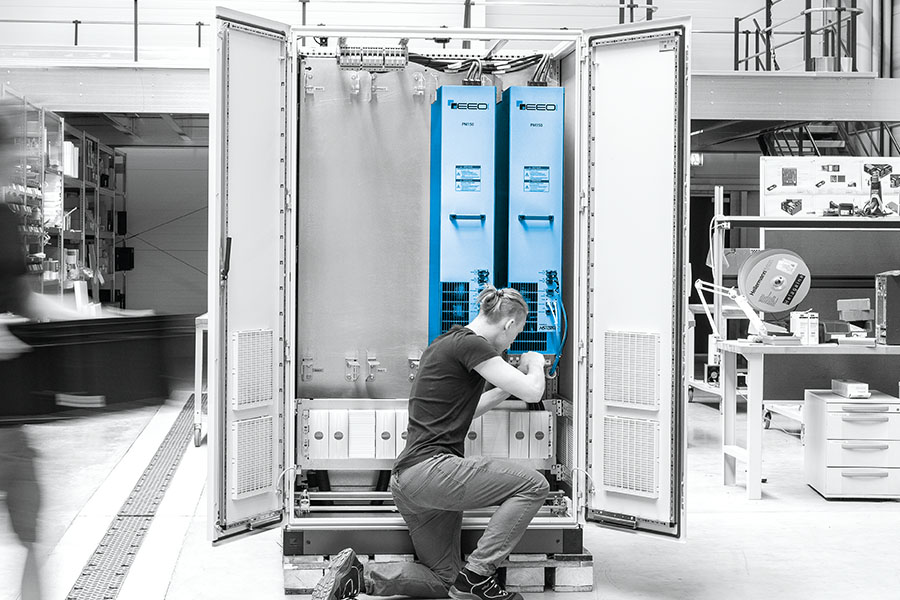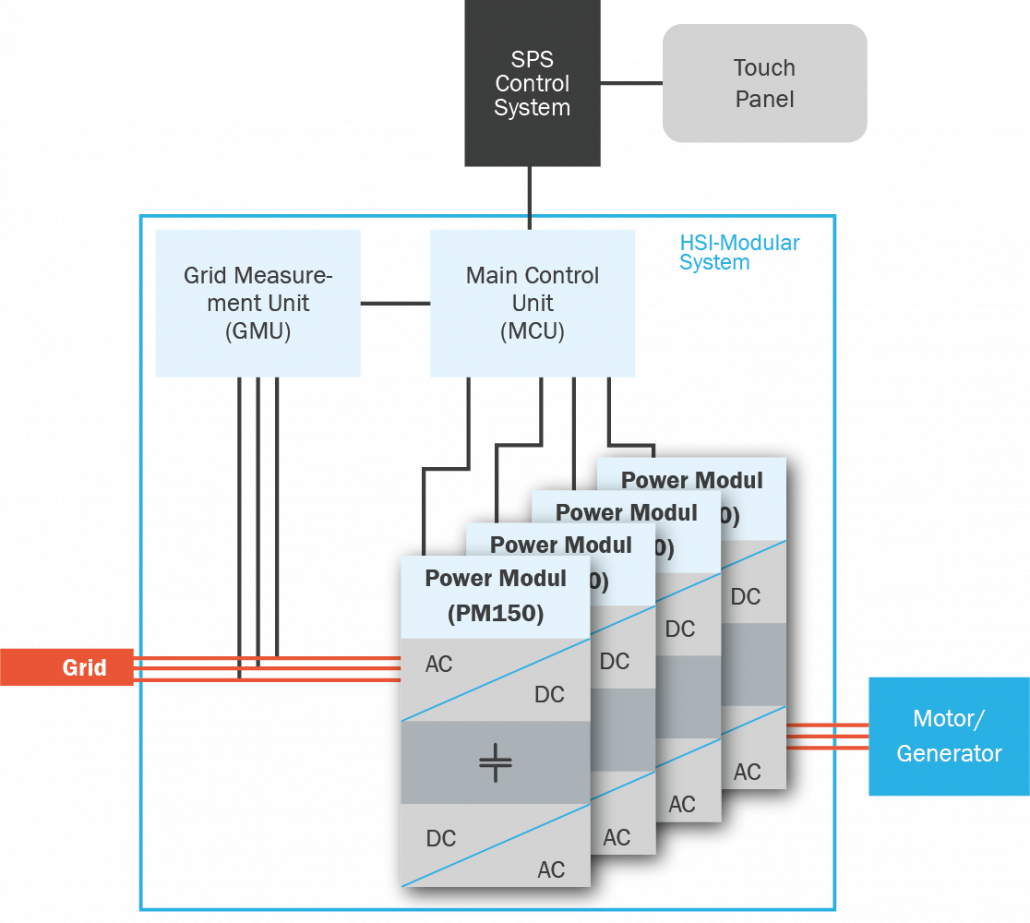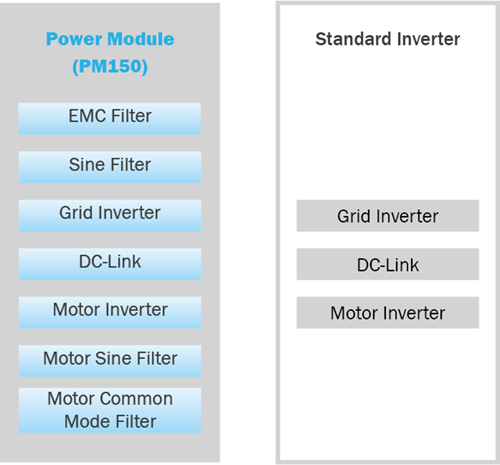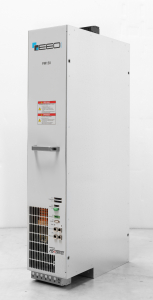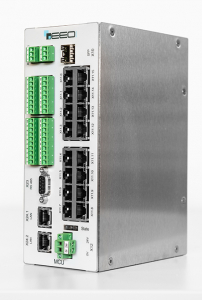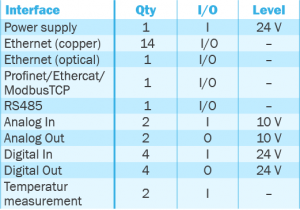Highlights
The HSI Modular Inverter System consists of up to 12 power modules (PM 150) as well as one Main Control Unit (MCU) and one Grid Measurement Unit (GMU).
The innovative multi-level technology is enabling operation of high-speed equipment with high efficiency at high voltage and low THD.
System Overview HSI-Modular
HSI-Modular is very flexibly scalable from 180 kVA to 2160 kVA for 2Q or 4Q operation. Up to 12 PM 150s can be controlled by one MCU and power a drive. In generator mode, the GMU ensures grid monitoring and regulation-compliant infeed. Various interfaces allow e.g. the connection of a PLC system.
Integrated System Components
All components and filters required for efficient plug-and-play operation and grid compliant feed are included in the power module PM 150. The filters used are of minor importance in terms of size and weight and are integrated into the housing of the PM 150.
The calculated values stated, including the efficiency of the system, incorporate all system components and filters.
General Advantages
The modular inverter system HSI-Modular offers a simple plug-and-play solution for high-performance high-speed drives. It consists of up to 12 parallel -connectable power units PM150, the central control unit MCU, which can control up to 12 power units, and the grid measuring module GMU. This allows the implementation of 4Q high-speed solutions, where speed and torque can be in any direction, with up to 2.1 MVA system power and minimal engineering and design effort.
Thanks to the multi-level technology and the highly integrated power section, efficiencies of more than 97% can be achieved at switching frequencies of 32 kHz and rated voltages up to 690 V AC. These values include all losses related to the power unit and the integrated filter components. There is no requirement for external filters.
Advantages for the OEM/ System Integrator
Powermodul – PM150
The 150 A power module includes an AFE (Active Frontend) with an adjustable cos φ which enables to either draw or feed energy into the grid. It also provides reactive power capability. The required filter components (sine filters and EMC filters) are included in the device. The motor/generator drive is based on the innovative multi-level topology. This enables operation of high-speed equipment with high efficiency at high voltage and high switching frequency. Thanks to the multi-level technology and the integrated motor sine-wave filter, a very low THD of the output current is achieved, which reduces losses in the associated high-speed machine. This is resulting in a high power density. A common mode filter is also integrated. Sufficient cooling is provided through variable speed fans which will shut down at low load.
Grid Measurement Unit – GMU
The Grid Measurement Unit (GMU) in conjunction with the Main Control Unit (MCU), is used for continuous grid monitoring and regulatory compliant infeed. The power supply network is continuously monitored via 3 measuring channels for each of the mains voltages and mains currents. This is done with a sampling frequency of greater than 50 kHz and a resolution of greater than 16 bits. Network events such as LVRT (voltage dips) or HVRT (overvoltages) are instantly detected and information is passed on to the MCU. This will ensure that network requirements are met. In case of national grid disturbances, the inverters do not immediately disconnect from the network but attempt to temporarily stabilise the grid.
Main Control Unit – MCU
The Main Control Unit (MCU) is the smart hub of the HSI Modular inverter system. It allows the synchronised operation of up to 12 power modules. These are connected to the MCU via LAN cables. Within a few microseconds, the MCU receives the information from the individual power modules, processes it and returns control values to the individual power modules (PM150). The sensorless field-oriented control of the high-speed machine or the grid control of the AFE is performed on the MCU.
The control can be customised with a control frequency of up to 50 kHz. This facilitates accurate adjustment control of equipment with high rotational speeds or fundamental frequencies. The existing fieldbus interface (Profinet, MODBUS / TCP) can be used to connect the inverter system to a upper level control system (eg PLC). The existing I/Os enable the control of external components.

